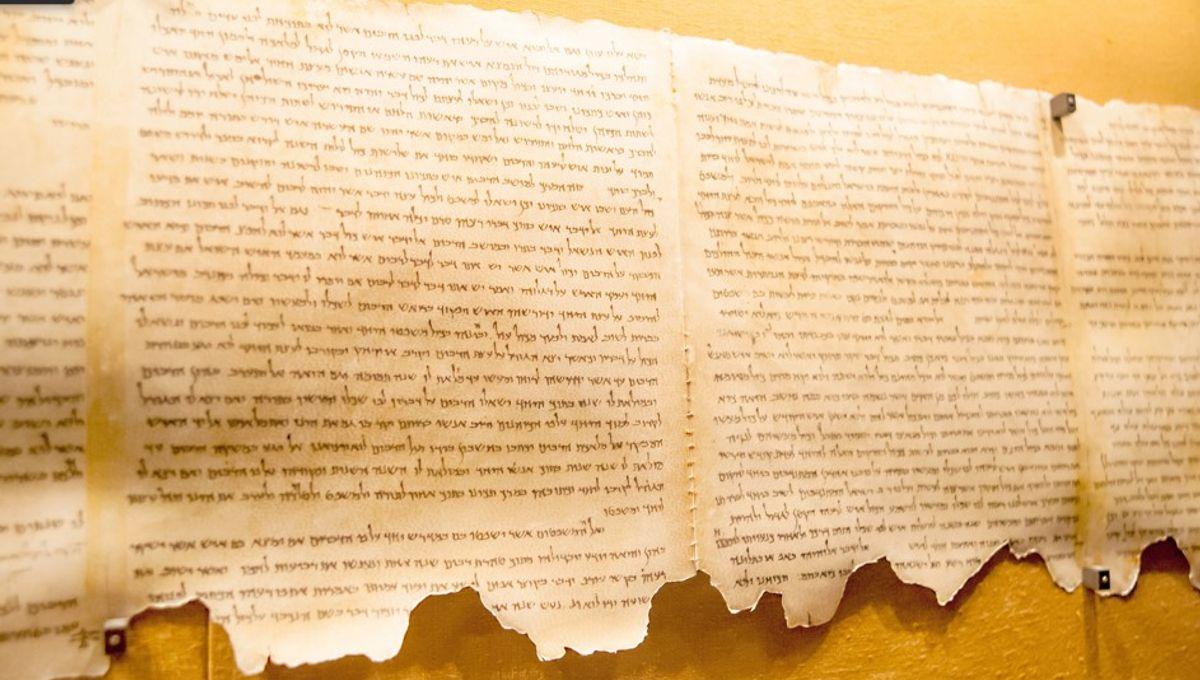Dead Sea Scrolls May Have Been Written By Original Authors Of The Bible

Dead Sea Scrolls May Have Been Written By Original Authors Of The Bible
A new artificial intelligence (AI) model has helped researchers determine the age of the Dead Sea Scrolls, revealing that some of these manuscripts are considerably older than previously thought. Most significantly, it now appears that a few of the ancient documents may even have been written by the very people who composed the Bible.
Discovered in the mid-20th century in a series of caves in the West Bank, the Dead Sea Scrolls are ancient Jewish texts that have proved instrumental in advancing our understanding of the evolution of the Hebrew Bible. However, while they are generally believed to have been written between the third century BCE and the first century CE, the scrolls’ exact age has until now remained a mystery, as none of the manuscripts are labeled with a date. In such cases, researchers can sometimes determine the age of a document by analyzing the handwriting style and comparing this with other date-bearing manuscripts. The problem in this case, however, is that the Dead Sea Scrolls were written slap bang in the middle of a centuries-long period for which we have absolutely no dated documents. “When we have a manuscript that has no calendar date, we can compare it with similar handwriting in a manuscript that has a calendar date,” explained study author Dr Mladen Popović from the University of Groningen. “But we cannot do that for the Dead Sea Scrolls, because for a couple of hundred years we have no dated manuscripts,” he told IFLScience. To overcome this hurdle, the researchers created an AI program called Enoch, which they trained to analyze handwriting styles in a series of dated ancient documents. Tests then showed that the model was remarkably accurate at determining the age of documents based on the type of calligraphy. The study authors, therefore, used Enoch to scrutinize the handwriting of 135 of the Dead Sea Scrolls in order to place them chronologically. Specifically, the program was employed to study the Hasmonaean and Herodian-type script present on these documents. Crucially, Enoch allowed the researchers to determine the age of individual manuscripts, revealing that some were created considerably earlier than the period typically associated with the Dead Sea Scrolls. “Instead of what we thought before, where we only had a few scrolls dated to the third century BCE, now we have more dated to this time period plus one or two that even go to the late fourth century BCE,” explained Popović. “In some cases we see dates that are 50 years older or maybe even a century older [than previously assumed],” he adds. This implies that writing styles associated with social political changes in the Middle East may have emerged earlier than we thought, which could have major implications for our historical narratives. “Scholars in the field will now have to rethink historical reconstructions and models they have made of the people behind the Dead Sea Scrolls, and also broader historical developments in the ancient Mediterranean when it comes to empires like the Seleucids in Syria or the Ptolemies in Egypt, and then Judea with the Hasmoneans and things like that,” explains Popović. Yet the most striking results to emerge from this study concern the ages of two fragments from the Book of Daniel and Ecclesiastes, which are believed to have been written by unknown authors in the second and third centuries BCE, respectively. Remarkably, Enoch revealed that these particular scrolls were both written at precisely these times, making them the first known biblical manuscripts dated to the time of their presumed authors. “We have two biblical scrolls that are now dated contemporaneously with when we think that the author was actually writing, and that's very exciting, because then you really are in the same vicinity temporarily with the hands that wrote the Bible,” says Popović. The study has been published in the journal PLOS ONE.


